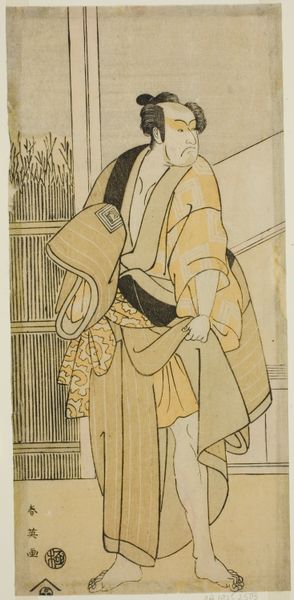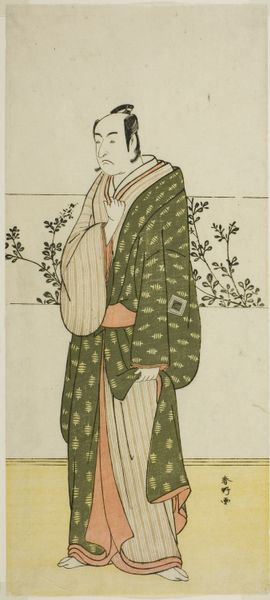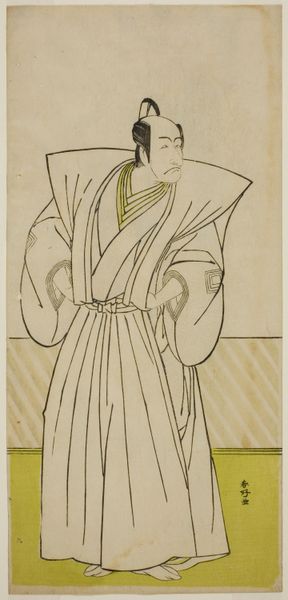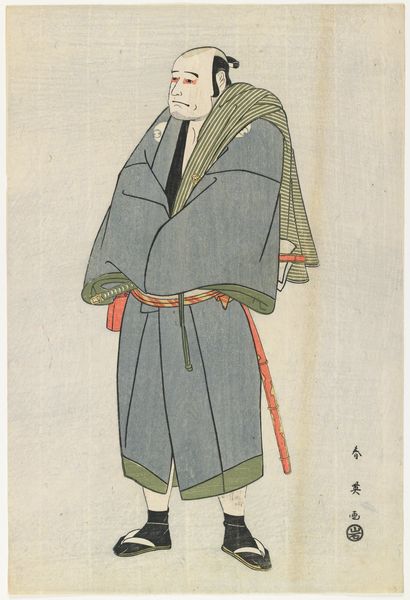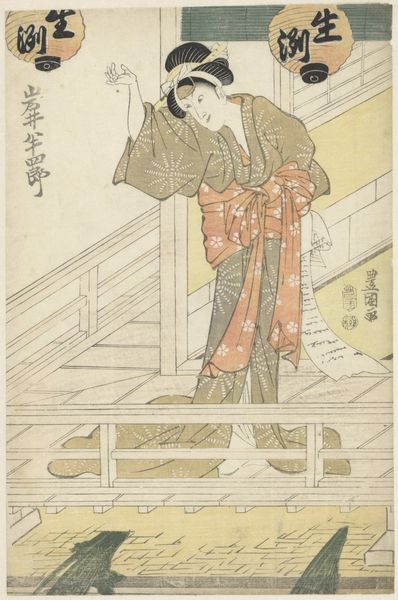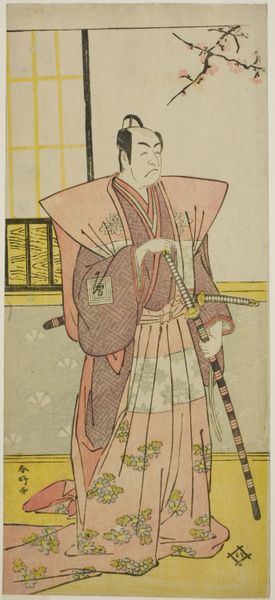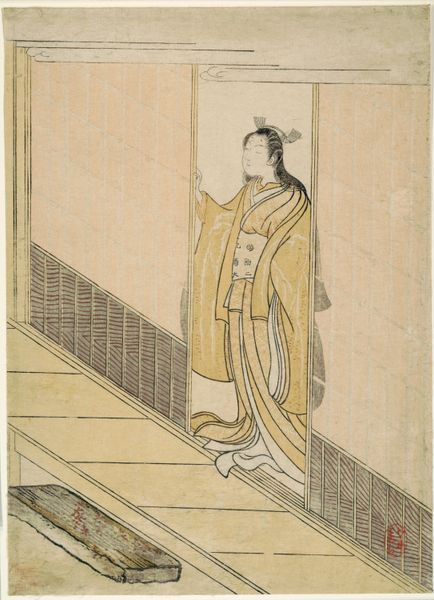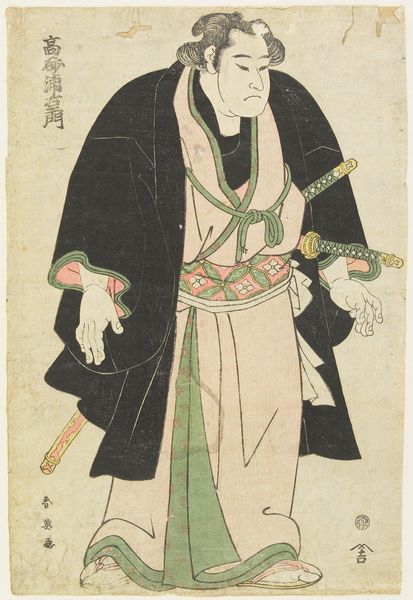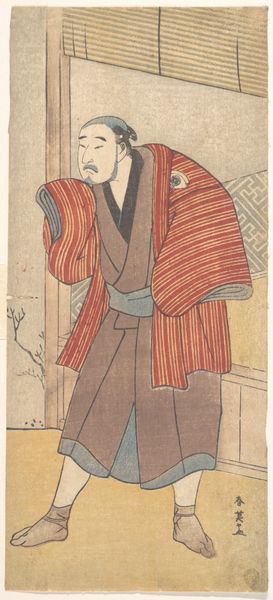
The Actor Kataoka Nizaemon VII as Yoshidaya Kizaemon in the Play Edo Sunago Kichirei Soga, Performed at the Miyako Theater in the First Month, 1795 c. 1795
0:00
0:00
#
portrait
# print
#
asian-art
#
ukiyo-e
#
genre-painting
Dimensions: 31.8 × 13.8 cm (12 1/2 × 5 7/16 in.)
Copyright: Public Domain
This woodblock print by Katsukawa Shun'ei depicts the actor Kataoka Nizaemon VII in a Kabuki play, made in Japan in 1795. It represents a fascinating moment in the social history of Japanese theatre. Kabuki emerged as a popular form of entertainment, particularly among the merchant class. The strict social hierarchy of Edo-period Japan meant that the lives of merchants were often governed by sumptuary laws dictating clothing and behavior. Kabuki became a space where these social norms could be explored and challenged, albeit within the confines of theatrical representation. Here, the actor's costume, hairstyle, and even his exaggerated pose are visual codes that would have been instantly recognizable to the audience of the time. To fully understand a work like this, the historian turns to playbills, diaries, and other documents that shed light on the social and institutional context in which it was created and consumed. This helps us to understand the complex and ever-evolving relationship between art and society.
Comments
No comments
Be the first to comment and join the conversation on the ultimate creative platform.
